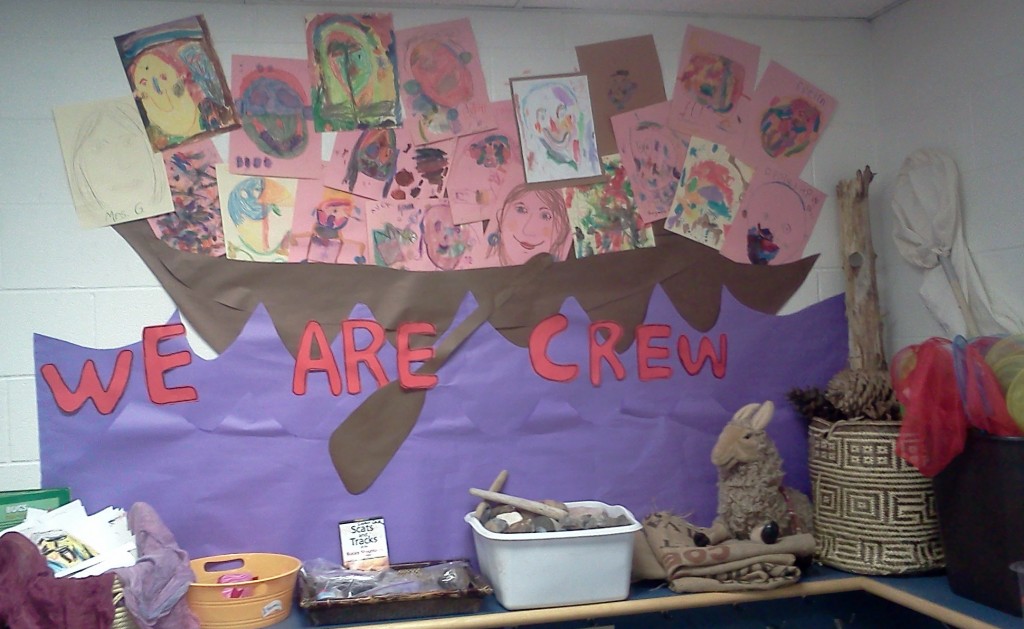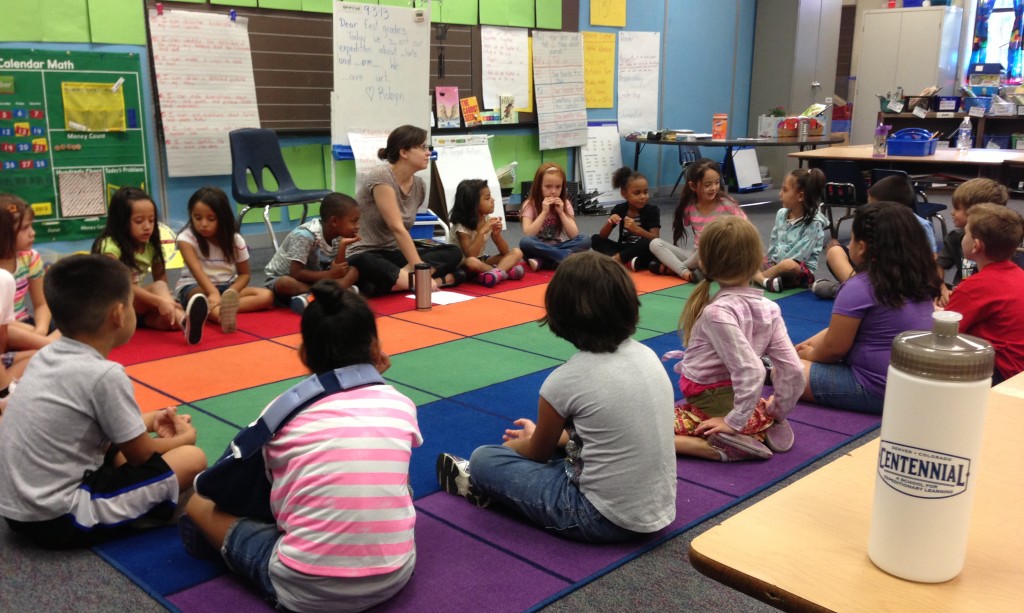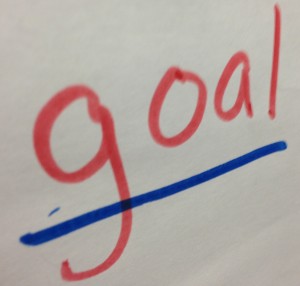One of the foundational credos of Expeditionary Learning is “We are Crew, Not Passengers.” This metaphor refers to a group in a boat on a long voyage, where everyone is needed to pull at an oar and no one sits by watching. In adhering to this motto, “Crew” can be used to reference both individual classrooms and the entire school community. We strive to instill a sense of responsibility, participation, and cooperation among individuals, the student body, the school community, and the greater community. This motto represents our commitment to inclusion and action in the service of self and others.

At Centennial our goal is to bring our community together, promote shared understandings and encourage all community members to become Crew, not passengers. Far more than a traditional classroom, one’s “Crew” is a tightly knit family unit that begins every single day of school with a morning meeting, deepening relationships, team building, sharing, developing group norms, and shaping and reshaping their culture. Teachers and students listen actively and attentively to one another. In crew, students re-define what it means to be a learning community that really supports and challenges one another. Because of our looping and multi-age model, students develop stronger bonds over a two-year span with their crew leaders and peers. In addition they also establish and support relationships school wide through buddy systems and Community Circle.
Centennial’s crew structure will allow for the development of the following character traits – Respect, Responsibility, Leadership, Determination and Wonder. All members of the Centennial community will support the implementation and success of Crew.
Support the core Expeditionary Learning Design Principles in relation to building respect, responsibility, courage and kindness. Learn more about the Character Framework.

We rarely get better at something without ongoing assessment. Schools need to provide opportunities for students to get feedback. Students need time to reflect on how they see themselves, how others see them, and how they want to be seen in relation to the Design Principles.

Frequently Asked Questions about Multiage Classrooms
Research strongly suggests that children benefit in many ways from multiage classrooms (Miller, 1990). Academically, children usually do better in multiage classrooms than in traditional classrooms (Anderson & Pavan, 1993). If they don’t do better, then they do the same. Multiage classrooms clearly do not negatively affect academic achievement (Miller, 1990). In addition, the benefits for children socially and emotionally are consistently higher in multiage classrooms. From his view of research, Miller notes, “When it comes to student affect, the case for multigrade organization appears much stronger, with multigrade students out-performing single-grade students in over 75 percent of the measures used.” Multiage children often have a greater sense of belonging (Sherman, 1984) and more positive social relationships, also.
This question assumes that traditional classrooms are the best way to educate children. As you investigate the philosophy of multiage classrooms, you quickly conclude that this child-centered approach is good for all children. In the multiage classroom, children progress at their own pace, view themselves as successful, learn from their peers without competition, and have the opportunity to mentor.
Whether a whole school is multiage or only a portion of the school, children should be randomly selected. There should be a balance of ages, abilities, and gender.
Usually the best age range is at least three years. Many schools do two-year combinations. Sometimes, if the teachers are not careful, a two-year program results in teaching each group rather than teaching the children as one group.
With a three year span, it is impossible to address grades separately with a graded curriculum. With a three-year span, the children must be looked at as individual learners on their own continuum. There are also social and emotional benefits that result from a three-year span. With a three-year span, there is a greater opportunity for children to be mentors and mentored, less opportunity for competition, and more opportunities for cross-age learning.
In the multiage classroom every child, even the older child, is on his or her own continuum of learning. The older child is able to go as far as he or she is able, just as the younger child is. All children are able to progress beyond the traditional classroom limits at their own pace. Social and emotional benefits are also apparent through mentoring and modeling, older children gain confidence and increase their self-esteem. Older children also learn how to care for and nurture others.
Yes, gifted children benefit in the same way that older children benefit. Younger gifted children have the opportunity to interact with older children, increasing their level of learning. Older gifted children have the opportunity to increase leadership and mentoring skills. Gifted children, as do all children, have the freedom to pursue their interests and the opportunity to creatively expand their knowledge.
One must keep in mind that even in same-age classrooms; children are at different levels of learning. In a multiage classroom, these differences are accepted and respected. Each child is able to participate in reading, writing, and problem solving at his or her own level of development. The multiage teacher knows each child’s needs and supports each child’s development to the next stage by tailoring activities to expand each child’s level of understanding. Effective large and small group learning experiences are used, which allow for each child’s continuous progress.
Multiage teachers do not advocate retention. All teachers should be able to fit the curriculum to the child rather than the child to the curriculum. Children in a multiage classroom are truly given the gift of time to develop. Most children leave the multiage classroom ready to engage in a graded classroom. Wisely, many schools are now creating multiage classrooms for the upper elementary grades and middle schools. Furthermore, children in multiage settings are prepared to learn and have high self-esteem, which helps them to thrive in any environment.
Experience has shown that children who are in multiage classrooms are more confident learners and adapt quickly to same-age classrooms. They have also had time to see themselves as competent learners in the multiage classroom and can therefore survive the comparative process in a same-age classroom. To have had some time in a multiage classroom is better than to have none at all. We do not want to eliminate multiage classrooms because children may eventually go into a graded classroom. This is like starving a child today because some day they may encounter a famine.
Every month Centennial hosts a Community Circle where community and family members are invited to experience Crew with their students. Community Circle will be a time to build community among Centennial students, staff and families and to recognize and celebrate Centennial students for achievements related to both academics and Habits of Scholarship.
Community Circle generally takes place on the last Friday of the month.